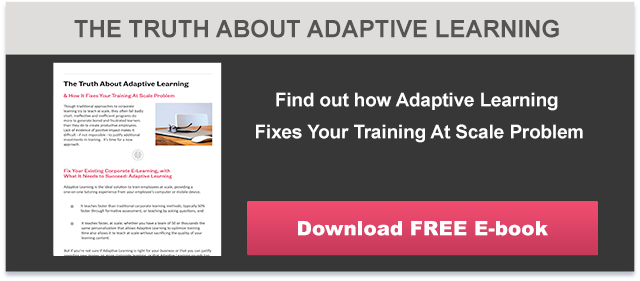We already know that Adaptive Learning has multiple benefits for the learner and the business, but the technology also benefits the instructional designers who create corporate e-learning courses.
Because of a heightened demand by learners for a more customized experience and for the continuous need to close the digital skills gap, there is pressure on instructional designers to create more courses while reducing design and development time. The fear, of course, is that faster e-learning design might come at the expense of course quality and content. For designers using the ADDIE (Analysis, Design, Development, Implementation, and Evaluation) model this could be the case, but agile course development addresses this dilemma.
How Adaptive Learning Benefits Instructional Designers and Digital Skills Development
According to Training Industry, we’ve effectively reached the end of the ADDIE era. While the ADDIE model may be sufficient for designers who believe learning is an event, forward thinking instructional designers, learning leaders, and learners see learning as an experience. The learning experience lasts from the first day on the job and continues past mastery of single courses or concepts; learnings lasts forever.
Agile development allows instructional designers to get the most important educational content to learners fast. Then designers add to the course over time as the business evolves. Pairing agile with an adaptive model means that learners never have to review content they’ve already seen.
And the agile method costs your business less in time and money than the ADDIE model.
Make Agile and Adaptive Your Learning Standard
There are other things your instructional designers need to know about Adaptive Learning. They can learn them in this ebook about how Adaptive Learning fixes the problems of corporate e-learning at scale.









